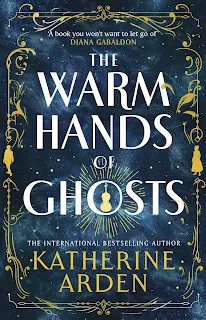Butts - A Backstory by Heather Radke is just that; a history of butts, bottoms, bums and backsides. Heather Radke is an essayist and journalist and makes it clear early on that this exploration will focus on her own individual interest in the topic.
Published last year, the fact this wasn't going to be a - presumably dry - dull academic offering on the topic with the occasional interesting factoid was the primary appeal.
Don't take my word for it, let's hear it from the author in her own words:
"Ultimately though, this book is an idiosyncratic one. It stems from the questions that most interest me about the butt. Questions of race, gender, control, fitness, fashion and science." IntroductionI enjoyed setting expectations aside and following Radke as she covered various changes in fashion and the perception of women's butt size across history. A large derriere was once a sign of sexual deviance or sexual appetite which ironically led to the women's fashion for bustles. (See my review of Pockets - An Intimate History of How We Keep Things Close by Hannah Carlson for more on bustles.)
All that aside, I was very shocked to discover:
"In the early nineteenth century, there was a new mania for butts spreading through the British capital. Londoners were obsessed with butts. There were fart clubs where people gathered and drank different juices to see what sounds and odours they would produce." Chapter LifeReally? I wonder how prevalent this was. Black female bodies and sexuality were discussed and those who know their history won't be surprised to learn this included the case of Sarah Baartman. In the past, the butt had become a proxy for female genitalia, but like all fashion, the tides eventually turned.
After WWI, the art deco movement emerged which accompanied a significant change in women's beauty. After the lean war years of food rationing, women with curves were no longer desired and instead the flapper trend was born. Corsets and foundation garments were out and flappers were all about lean lines, straight sleeveless dresses with minimal bust or backside.
In France at around the same time was the dancing sensation Josephine Baker. Unfamiliar with her stardom and infamous banana dance - and putting this audiobook aside to watch it - I was struck by how similar the banana dance is to the provocative dance styles, hip shaking and twerking we saw emerging in the 1980s and 1990s and still today. Don't believe me? Check it out.
In the 1930s, women had difficulty buying clothing that fit off the rack due to a lack of a regulated and uniform sizing system. A study sent government employed measurers in multiple US states to measure the girth, length and height of the American woman. Later a statue of a man and a woman was created that were said to represent the average American - despite only white women being measured - and were named Norma and Normman. Radke takes the time to point out that the Norma statue doesn't have a thigh gap and how ridiculous the ideal of having a thigh gap is.
Moving on, in the 1980s Jane Fonda kicked off the aerobics craze and the infamous Buns of Steel movement. Prior to this, women didn't often work out as athletic bodies weren't considered attractive. Then Jane Fonda arrived and the rest is history. Just as Jane Fonda changed how women - and men - saw their bodies, more recent changes and influences were also included.
I greatly enjoyed learning about the influence Jennifer Lopez, Beyonce and Kim Kardashian had in popularising the return of bootylicious curves, which were a response to the 'heroin chic' look of Kate Moss. Entire chapters were devoted to Jane Fonda, Beyonce, Kate Moss, Jennifer Lopez, Kim Kardashian and Miley Cyrus and an entire chapter dedicated to the Twerk. My favourite chapter focussed on the work and opinions of Sir Mix-a-Lot and 'that' song Baby Got Back. ("Look at that butt Becky").
Those looking for commentary on butt lifts, butt implants and the BBL won't find any plastic surgery content here. Knowing in advance Radke was going to be following her interests, I can only assume this aspect of butt enhancement wasn't as engaging as the other topics.
Butts - A Backstory by Heather Radke primarily focusses on the female butt while covering a range of interesting topics: science, eugenics, fashion, history, music, celebrity culture, race, sexuality and female empowerment.
Highly recommended.












































